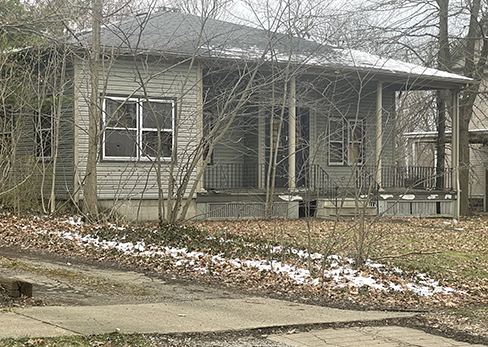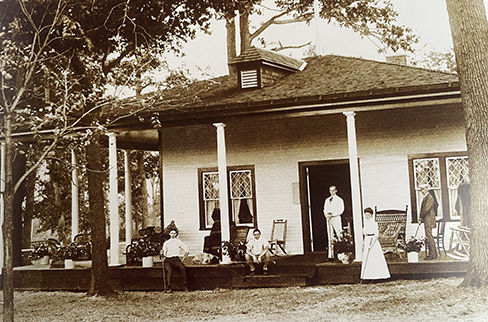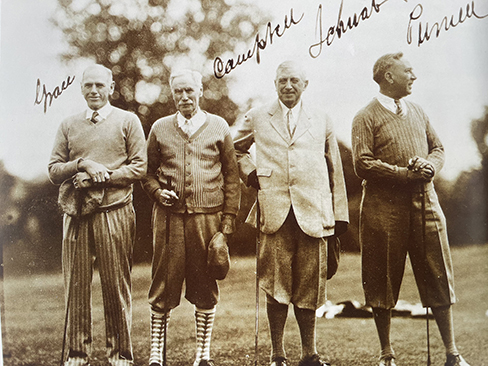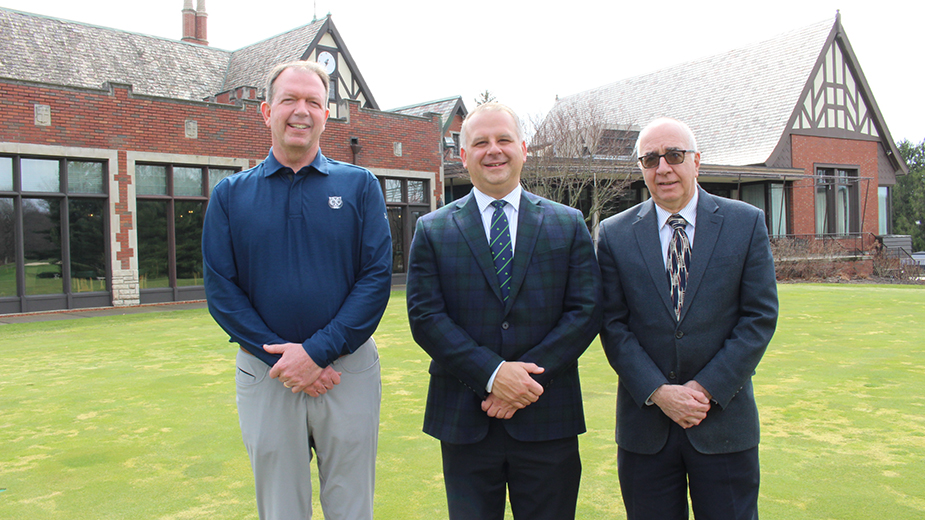YOUNGSTOWN, Ohio – Structurally, the house at 240 North Heights Ave. in Youngstown isn’t very remarkable.
Three of its lower front windows are boarded. Another is broken. Some wooden slats from the decorative lattice below the porch deck are missing.
Otherwise, the 1,876 square-foot dwelling on the city’s North Side – one block north of Wick Park – appears to have been preserved with vinyl siding, a solid roof and a partially enclosed porch on the west corner. Although noticeably vacant, it’s fared better than some others along the street.
What is remarkable about the house is its history.

Were this the turn of the 20th century, the house would be abuzz with activity on any given spring or summer day – its open porch and interior a sanctuary for some of the city’s most prominent industrialists and their families. Wicks, Tods, Bonnells – all were members of what was then called the Mahoning Golf Club, and its clubhouse on North Heights. They provided a place to congregate, relax and maybe do a little business. Just north of the clubhouse stood a nine-hole golf course, completed in 1900, that sat on leased land owned by the Bissell family.

No one realized it then but these early efforts laid the foundations of one of the Mahoning Valley’s premier clubs: the Youngstown Country Club, now in Liberty Township. In February, YCC’s clubhouse and adjoining 18-hole course were named to the National Register of Historic Places by the U.S. Department of the Interior.
The designation is important, say club members and executives, as the story of the Youngstown Country Club is also the story of the Mahoning Valley’s rise as an industrial powerhouse, the retrenchment of that industrial base, and its revival in the new economy.
“[The club] developed with just a few founding members,” reflects Joe LaRocca, YCC director of membership relations.
According to a booklet produced for the club’s 100th anniversary by Joseph E. Gurley, YCC was established in 1898 as the Mahoning Golf Club. Gurley’s account says on Aug. 20 of that year, 80 men and women chipped in $5 each to cover the $15 annual lease on the property, membership dues and the costs to maintain the grounds.
Within a few years, membership outgrew the small North Heights house, and a second clubhouse was constructed at Ohio Avenue and Redondo Road, a structure that no longer exists. The new, 2,950-yard nine-hole course stretched from Ohio Avenue to almost Belmont Avenue.
Then, in 1912, the club moved to a sprawling 121 acres in Liberty Township off Logan Avenue, its present site. John Tod, who designed the North Heights structure, chaired a committee to build the third clubhouse, a majestic mansion overlooking a new 18-hole course that was initially designed by Walter Travis. The course underwent a major renovation in 1921 by acclaimed architect Donald Ross. By this time, YCC had earned a nationwide reputation as a destination in the golf world.
“What really stands out to me is the number of golf professional exhibitions that took place here,” says Scott Sundstrom, head golf professional. Gene Sarazen and Walter Hagen – superstars of the 1920s and 1930s – played the course. Harry Vardon and Edward Ray, two of England’s greatest golfers in 1920, also played here that year.
Club member Louise Fordyce made her mark in women’s golf and was ranked among the top six female players in the country during the 1920s, according to Gurley’s account.
A highlight came in 1925, when the club hosted the Western Open, then considered among the major national tournaments in men’s golf, Sundstrom says. “You can only imagine the buzz that took place in Youngstown,” he says.
Another achievement that stands out is the work of Col. John Morley, who served as the club’s course superintendent from 1913 until his retirement in 1942, Sundstrom says. “He is the one who actually formed the Golf Course Superintendents Association of America. A lot of people don’t realize that. We’re fortunate to have his name associated with us.”
The club has endured two world wars, the Great Depression, a recession, and an economic realignment that continues to impact local clubs to this day. Perhaps the most challenging moment came in 1928, when a fire destroyed the center portion of the clubhouse.
“The two wings were saved,” says Paul Ricciuti, a retired architect and club member who helped to prepare the paperwork seeking the National Register designation. “Then, the center was changed to a gothic architecture, which was prevalent in the 1920s for country clubs,” he says.
Ricciuti and others spent three years investigating the club’s history and its significance to the Mahoning Valley. “All of the industrialists at the turn of the century built this club,” he says. As the club grew, so did the importance of the Mahoning Valley in terms of industry and business.
Club president Scott Schulick says YCC often served as the venue for some of the major business deals that affected the Mahoning Valley. “This was a place where business got done,” he says.

Schulick recounts that discussions related to the proposed, and ultimately unsuccessful, merger between Youngstown Sheet & Tube and Bethlehem Steel took place on the golf course and in the clubhouse.
LaRocca, the membership relations director, says that his family first became involved with the club in 1962. “We all started caddying, worked our way into the kitchens, wait staff and management. A lot of the members have become family to us.”
LaRocca says club members have stood solidly behind the club and its operations, especially during the 1980s, as the Mahoning Valley reeled from the loss of major corporations.
While the club has maintained solid memberships through area banks, hospitals and institutions such as Youngstown State University, a sizeable portion of the membership today consists of representatives of smaller businesses rather than the major industrial players that reigned during the 1960s and 1970s, LaRocca says. “A lot of the members have stayed with everything because they like this place,” he says.
LaRocca says membership increased 30% in 2023 compared to the previous year, and he projects stronger growth in 2024. “We have a lot of people who want to become involved because of our historic nature,” he says.
The club recently kicked off its 2024 membership campaign. “The National Register designation sets apart membership at the Youngstown Country Club from any other club,” Schulick says. “We’re proud of the fact when you’re a member here, you’re a member of something a little bit bigger.”
Pictured at top: Scott Sundstrom is the head golf professional at the club, Scott Schulick is president of the club and Joe LaRocca is membership director.
